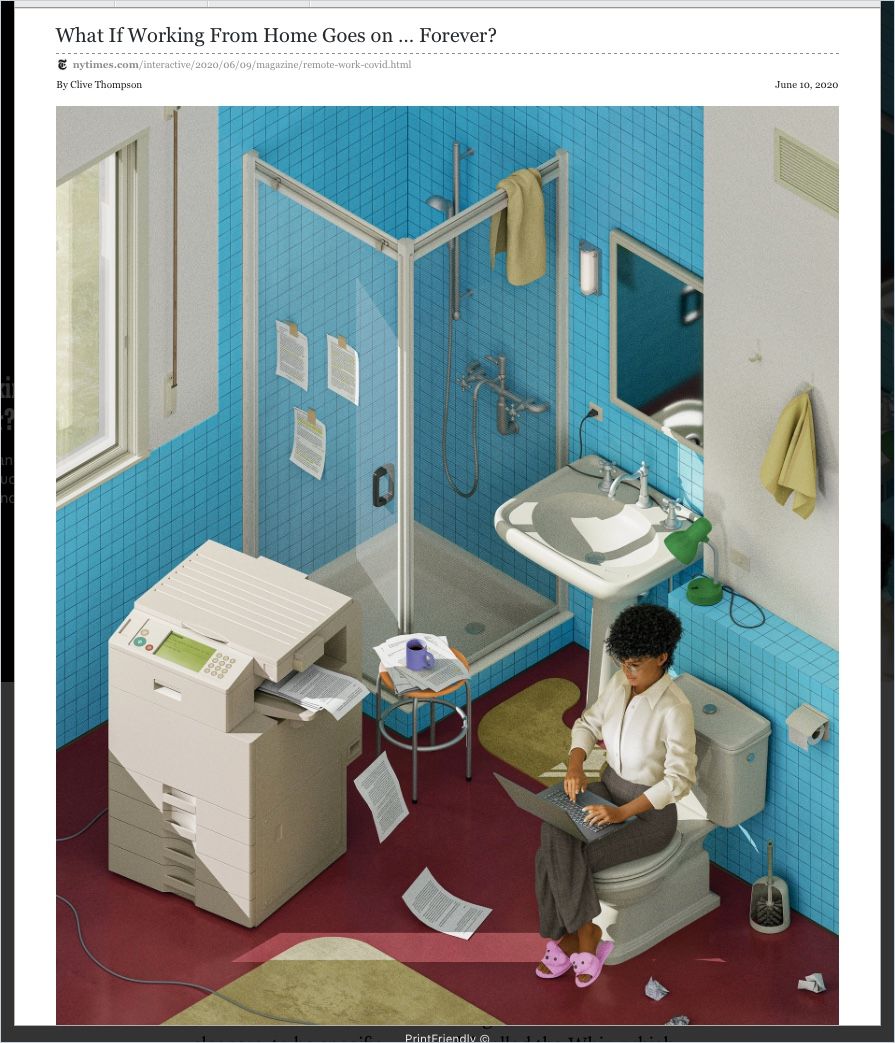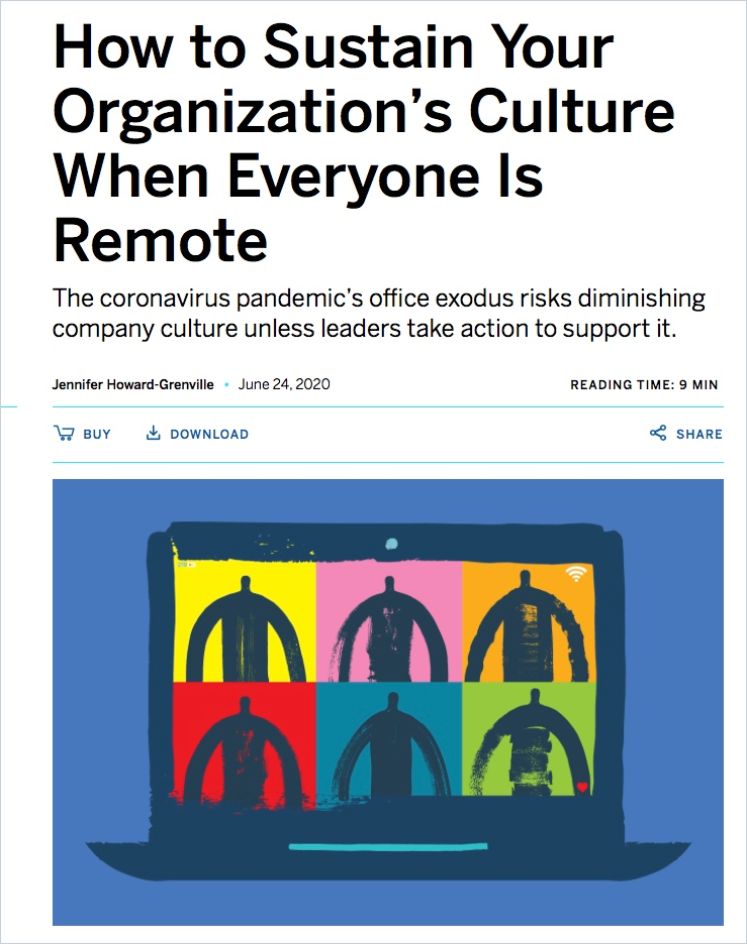Looking Beyond the Water Cooler

Videoconferencing, online file sharing, interactive chats: The past few months have highlighted the potential and usefulness of all these technological aides. Teams demonstrated how productive they could be working from home. Employers eyed cost-savings on office rentals. Employees relished a better work-life balance. But at the same time, this period of increased reliance on remote technology also laid bare the limitations of this “new way of working.”
Zoom allows you to see your colleagues talk, but you won’t be able to pick up on all the small cues of non-verbal communication.
A virtual coffee chat offers a nice break from your otherwise rather monotonous home-based work routine, but it is not the same as a person-to-person encounter.
Then there is the small talk, the chance encounters and run-ins at the office that used to offer fresh inputs on the projects you were working on – not to mention opportunities to have a good laugh and bond with colleagues over non-work-related issues.
Let’s face it: There is no real substitute to person-to-person interaction. Online “mystery coffee” chats cannot entirely replicate a chance encounter at the water cooler, nor can an online group event replicate an in-person gathering. Pretending otherwise would be ill-advised.
What we can do instead is to try to address the same needs in a new way – or at least to bring more humanity into our online interactions. getAbstract’s three-step process of navigating the New Work context – Adapt, Transform, Reinvent – can serve as a guide.
Adapt
Chances are, you are spending more time in videoconferences than ever before. So how do you infuse the videoconferencing world with a greater sense of community? Here are two ways to do so:
Do you feel uncomfortable staring at another person’s face on video for an extended period of time?
Feeling this way is only natural – it’s not the way we have evolved to interact with other human beings. Indeed, scientists have found that people bond better using video when they can see the other person’s torso. Similarly, researchers at Accenture Labs discovered that using portrait versus landscape mode proved helpful in establishing connection. Adjusting your camera settings – and encouraging others to do the same – can go a long way!
Are you getting antsy and tired of sitting and staring at a screen?
Besides facilitating chance encounters, a trip to the water cooler also offers an opportunity to get moving. We know from brain science that moving your body impacts your cognition. In other words, getting up and walking around the room during a work call may spark a fresh insight that can move your work discussion forward.
There is just a minor problem: You don’t want conference participants having to stare at an empty chair while you talk. But there is a technical workaround: The company Loom.ai has developed customized avatars that lip-synch your words onscreen – enabling you to freely dance around the room while you talk.
For more on how to leverage technology to improve your remote work interactions, check out Clive Thompson’s piece in The New York Times Magazine:

Transform
People are hungry for interaction. So if you are a leader, why not use the positive momentum to build vibrant online communities? These won’t replace in-person gatherings, but they offer other advantages instead. For example, virtual meetings allow you to bring together disparate people with similar interests, but without having to worry about logistics and travel budgets. You can have people work together who would otherwise never have met, resulting in new synergies and creative connections.
There are many ways to bring an element of fun to an online gathering, writes David Spinks in the First Round Review. For example, start your meetings with a round of introductions sparked by a “fun” question or ice-breakers like “high-and-low,” in which participants share one positive and one challenging item in their life or work. Encourage everyone to bring a snack or drink and let others know what it is.
To keep things interesting, Spinks suggests, bring some variety into your online meetings. The sky is the limit! Embrace different formats such as small-group webinars (no more than 10 people) with featured speakers, speed networking, collaborative tools for brainstorming or hackathons, and shared creative experiences, like music.
Learn more about using your creativity to foster authentic connections among webinar participants:

Reinvent
We live in a new era. And this offers an opportunity for organizations to get rid of what no longer serves them.
Corporate culture is much more than the physical elements of an office, explains Cambridge University Professor Jennifer Howard-Grenville in the MIT Sloan Management Review. And while shared company norms and values are important to keep disparate staff members engaged and working together, these cultural elements do not have to be identical to those that guided your company before the pandemic.

How to Sustain Your Organization’s Culture When Everyone Is Remote
MIT Sloan Management ReviewAn effective company culture is one that arises from and resonates with employees’ experiences. Already prior to the pandemic, a commitment to social and environmental responsibility, for example, has become increasingly important for keeping employees engaged, especially Millennials and members of Generation Z. The disruption and suffering that the pandemic has caused offer opportunities for leaders to redefine their company’s mission under these extraordinary circumstances and form new cultural commitments.
In addition, months of home office has blurred some of the traditional distinctions between people’s home and work lives. This has inevitably changed work practices, norms and expectations. Although in-person office chit chat is out, some employees came to feel that they could be more themselves and open up about their private lives more despite – or perhaps because – all their interactions have been taking place online.
As management consultant Vlatka Hlupic said in an interview with getAbstract, the current moment offers a unique opportunity for companies to reinvent themselves and to “humanize” the work place:
There will be an end to the pandemic. Some of us will be able to go back to a physical office and resume their water cooler conversations. But when it comes to working and interacting with each other, we will be richer for it. There will be a new, virtual dimension to our workplace culture that many of us will no longer want to live (and work) without.













